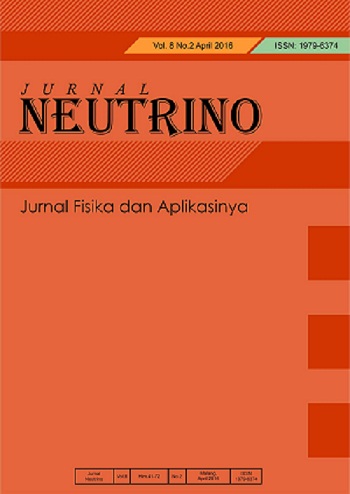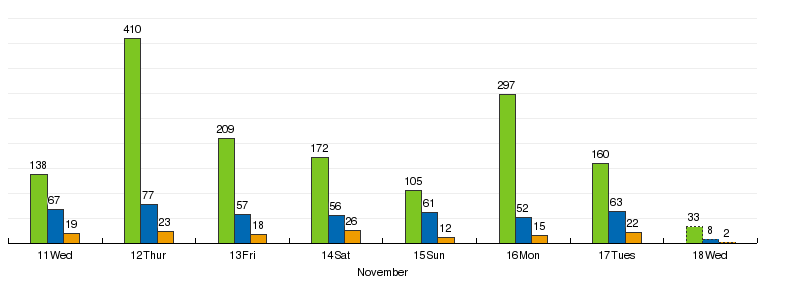ELECTRONIC NOSE (E-NOSE) DESIGN FOR ARDUINO NANO-BASED HALAL HARAM IDENTIFICATION
Abstract
It has been successfully designed an Electronic Nose (e-Nose) instrumentation system consisting of 6 MQ gas sensors, namely, MQ2, MQ4, MQ5, MQ7, MQ9, MQ135. The E-nose system is used to identify halal-haram food. This E-Nose system uses an Arduino Nano microcontroller. The Graphic User Interface (GUI) system is built with Visual Studio 2008. Then, the data responses will be evaluated by using 2 patterns recognition methods called Principle Component Analysis (PCA). The classification results can be explained by the value of the score plot on the PCA of the data. PC1 accounts for 19% of the variance, and PC2 accounts for 5% of the variance, data obtained is stored and displayed on personal computers in Excel format. Each sample was tested for up to ten repetitions. The data obtained from the six sensors in the e-nose was processed using Minitab 18 and it was necessary to obtain classification data on lard, pig oil, and sample B, which were fried crackers using pork oil.
Keywords
Full Text:
PDFReferences
B. P. Street. Characterization of Mobile e-Nose for Halal Detection Device. pp. 0–2.
H. Barroroh. Identifikasi Pola Spektra Infra Merah Khas Protein Daging Sapi dan Babi Menggunakan Metode Second Derivative (2D). Universitas Islam Negeri Maulana Malik Ibrahim. 2014.
S. Hermanto, A. Muawanah, and R. Harahap. Profil dan Karakteristik Lemak Hewani (Ayam, Sapi dan Babi) Hasil Analisa FTIR dan GCMS. J. Kim. 2008;1(3):102–109
R. M. Schnabel et al.. Electronic nose analysis of exhaled breath to diagnose ventilator-associated pneumonia. Respir. Med.. 2015;109(11):1454–1459
G. Y. Sari, W. Wildian, and N. Firmawati. Rancang Bangun Sistem Electronic Nose (E-Nose) Untuk Deteksi Sampel Kanker Payudara Berbasis Mikrokontroler Arduino Uno. Jurnal Ilmu Fisika | Universitas Andalas. 2018;10(1):1–10
E. F. Anggara, T. W. Widodo, and D. Lelono. Deteksi Daging Sapi Menggunakan Electronic Nose Berbasis Bidirectional Associative Memory, IJEIS (Indonesian J. Electron. Instrum. Syst.. 2017;7(2):209
Adam. Seminar Nasional Industri dan Teknologi (SNIT). Politeknik Negeri Bengkalis. 2018:247–258,
C. A. Lintang, T. W. Widodo, and D. Lelono. Rancang Bangun Electronic Nose untuk Mendeteksi Tingkat Kebusukan Ikan Air Tawar. IJEIS (Indonesian J. Electron. Instrum. Systems. 2017;6(2):129-140
Tazi, I. et al., Design and testing of electronic nose for determining the pattern of bad breath classification in patients with diabetes mellitus and pulmonary tuberculosis (TBC) AIP Conference Proceeding; 2021. p. 050004
DOI: https://doi.org/10.18860/neu.v13i1.8903
Refbacks
- There are currently no refbacks.
Copyright (c) 2021 Muammar Kadafi, Rachmad Almi Putra

This work is licensed under a Creative Commons Attribution-NonCommercial-ShareAlike 4.0 International License.
Editorial Office of Jurnal Neutrino:
Department of Physics, Faculty of Sains and Technology, Universitas Islam Negeri Maulana Malik Ibrahim Malang, Indonesia
B.J. Habibie 2nd Floor
Gajayana st. No.50 Malang 65144
Telp. +62 813-4090-1818
Email: neutrino@uin-malang.ac.id
This work is licensed under a Creative Commons Attribution-NonCommercial-ShareAlike 4.0 International License










